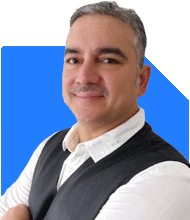Ramalingam Kalirajan |10902 Answers |Ask -Follow
Mutual Funds, Financial Planning Expert - Answered on May 06, 2024
He has an MBA in finance from the University of Madras and is a certified financial planner.
He is the director and chief financial planner at Holistic Investment, a Chennai-based firm that offers financial planning and wealth management advice.... more

Sir, Now I am 55 and started investing since last two years ago, due to family responsibilities. Now I am investing in (1) HDFC Midcap opportunities fund direct plan Rs 5000 (2) Mirae asset large cap and mid cap fund direct growth plan Rs 5000 (3) Nippon India Small Cap fund direct growth plan Rs 8000 (4) Parag Parikh flexicap fund RS 2000 per month. I will be remain invested for min 10 years. And retired with normal corpus. Not big. Please suggest for investment, Within Rs 20000- per month.
Diversify Your Portfolio: Your current portfolio already includes a mix of mid-cap, large-cap, small-cap, and flexi-cap funds, which is a good start. To further diversify, consider adding a balanced fund or a hybrid fund, which invests in a mix of equities and debt instruments. This can provide stability while still offering growth potential.
Consider Debt Investments: As you approach retirement, it's essential to balance your portfolio with debt investments to reduce overall risk. You can allocate a portion of your monthly investment towards debt funds or fixed-income instruments like PPF, RDs, or bonds. These investments offer steady returns and help preserve capital.
Evaluate Risk Tolerance: Given your age and investment horizon of at least 10 years, you can afford to take on some risk to achieve higher returns. However, it's crucial to assess your risk tolerance and ensure that your investment choices align with your comfort level.
Review and Rebalance Regularly: Periodically review your investment portfolio to ensure it remains aligned with your financial goals, risk tolerance, and market conditions. Rebalance your portfolio if necessary, considering changes in your financial situation or investment objectives.
Consult with a Financial Advisor: Consider consulting with a Certified Financial Planner or financial advisor who can provide personalized advice based on your specific needs and goals. They can help you create a customized investment plan and provide guidance on asset allocation, portfolio diversification, and risk management.
Stay Invested for the Long Term: Investing for retirement requires patience and discipline. Continue to invest regularly and stay committed to your long-term financial goals. Avoid making impulsive decisions based on short-term market fluctuations.
Remember, investing is a journey, and it's essential to remain focused on your goals while adapting to changing circumstances. With careful planning and prudent investment choices, you can build a secure financial future for yourself and your family. Keep up the good work, and best of luck on your investment journey!
You may like to see similar questions and answers below
Advait Arora | Answer |Ask -Follow
Financial Planner - Answered on Aug 07, 2023
Ramalingam Kalirajan |10902 Answers |Ask -Follow
Mutual Funds, Financial Planning Expert - Answered on May 26, 2024
Ramalingam Kalirajan |10902 Answers |Ask -Follow
Mutual Funds, Financial Planning Expert - Answered on May 17, 2024
Samraat Jadhav |2514 Answers |Ask -Follow
Stock Market Expert - Answered on Dec 18, 2025
Reetika Sharma |432 Answers |Ask -Follow
Financial Planner, MF and Insurance Expert - Answered on Dec 18, 2025
Reetika Sharma |432 Answers |Ask -Follow
Financial Planner, MF and Insurance Expert - Answered on Dec 18, 2025
Reetika Sharma |432 Answers |Ask -Follow
Financial Planner, MF and Insurance Expert - Answered on Dec 18, 2025
Samraat Jadhav |2514 Answers |Ask -Follow
Stock Market Expert - Answered on Dec 18, 2025

Kanchan Rai |648 Answers |Ask -Follow
Relationships Expert, Mind Coach - Answered on Dec 18, 2025
Kanchan Rai |648 Answers |Ask -Follow
Relationships Expert, Mind Coach - Answered on Dec 18, 2025
Anu Krishna |1754 Answers |Ask -Follow
Relationships Expert, Mind Coach - Answered on Dec 18, 2025
Anu Krishna |1754 Answers |Ask -Follow
Relationships Expert, Mind Coach - Answered on Dec 18, 2025
Anu Krishna |1754 Answers |Ask -Follow
Relationships Expert, Mind Coach - Answered on Dec 18, 2025

























